Description of red and the secrets of its cultivation
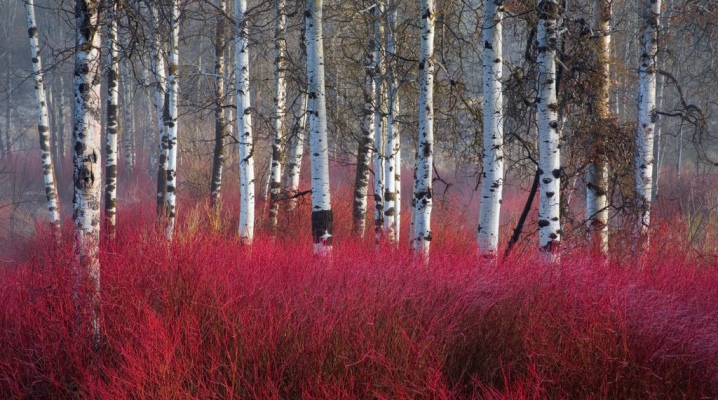
The willow family is quite popular. Its striking representative is the reddish, which has a large number of names: holly willow, shelyuga, red willow, verbolosis and others. In this article, we will consider in more detail the description of krasnotala and the secrets of its cultivation.

What is it and what does it look like?
Krasnotal is a dioecious plant belonging to the willow family. In Latin, its name sounds like Salix acutifolia. By its appearance, krasnotal resembles a shrub or tree. It is often called holly, which is no coincidence, because it has a pointed leaf shape. This plant grows in Russia and not only. Usually it blooms first in the spring, if you consider the middle lane.
Orthodox believers consecrate sprigs of red on Palm Sunday, and then decorate their homes with them.
Red willow is known in Ukraine and Belarus, in the north of Kazakhstan, in Finland and Lithuania, in Central Asia and in Siberia. It usually grows on sandy soils. It is quite common along rivers and water bodies, as well as in areas where riverine sands are located ..
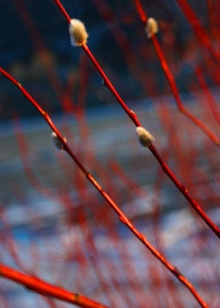
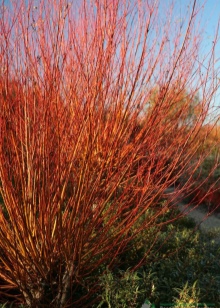
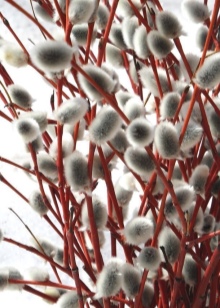
The zest of this plant is the shoots with red bark. They are covered with a bluish bloom that can be easily erased. But yellow twigs without plaque can be found quite rarely. Verbolosis is a tree-like plant, reaching a height of 5 to 7 meters. The crown of the tree is presented in the form of an oval, it is spreading and usually reaches 5-6 meters in diameter. If we consider shrubs, then the crown grows up to 3-4 meters.
Holly willow has rather flexible and thin twigs, with little or no branching. The bark has a reddish tint, from the inside it is yellow-lemon.
If we consider its taste, it is wormwood-bitter.
The leaves of the red willow have an oblong-pointed shape, as well as short petioles. They are arranged alternately. The length of the leaf can vary from 6 to 15 cm, but the width is from 0.7 to 1.2 cm. The leaves have a bluish tint at the bottom, and a deep green at the top. Small notches are located along the edges, in the center there is a convex vein.
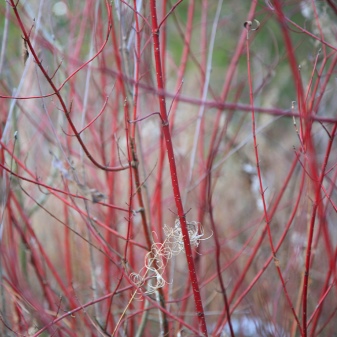
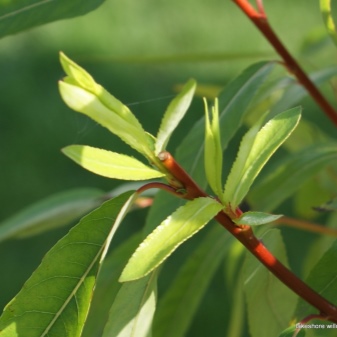
As mentioned earlier, the holly willow begins to bloom in early spring. You can admire its flowers from March or April. Flowering usually lasts no more than 12 days, since after this period leaves are already emerging. The flower looks very attractive, because it is represented by a rather fluffy silver-white earring. Its length is usually no more than 3 centimeters. Over time, the earring is decorated with small yellow-green flowers that form from a red bud. Its size reaches 6 mm. The flowers of the plant are unisexual. The reddish fruit is presented in the form of a box. It ripens in May or June.
It should be noted that the red willow is not whimsical to care for, and it also perfectly tolerates low temperatures.
It is usually found in light but humid areas. Red-brown shoots with fluffy catkins can please the eye for up to 40 days. Shelyuga flowers are very valuable in beekeeping as they act as early honey plants.
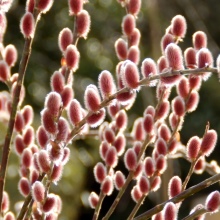
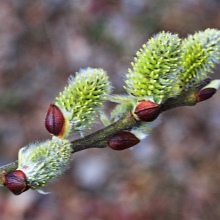
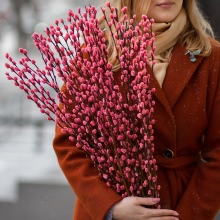
Landing
Red willow grows well on loamy soil. In addition, the tree grows even when the groundwater is close. Planting the holly willow is done in the usual way.
- First you need to dig holes. Their dimensions can be 0.5x0.5 meters, if you plan to plant a shrub. For tall trees, the size of the planting hole should be slightly increased. If you want to plant the shelyuga in the summer as a hedge, you should dig a trench.
- When the pits are ready, they need to be filled in by a third with soil. The soil should be composed of peat or manure and compost. If the site has heavy soil, then a small amount of sand can be added when planting.
- To determine when you can plant a tree, it is recommended to build on its root system. If we consider young trees with closed roots, then they can be planted throughout the warm season. They take root well even on hot days, because they are characterized by unpretentiousness. An open root system indicates that it is desirable to plant in early spring, before buds have appeared on the branches. Alternatively, you can plant a red willow in the fall, the main thing is that the variety must be winter-hardy. If the willow is afraid of frost, then it simply will not survive the winter, in this case it can be planted only in early spring.
- Initially, the tree needs abundant watering after planting. On average, one seedling accounts for 20-50 liters per half month. If the weather behaves unusually, the temperature reaches high values, then it is better to water it once a week. But if your trees are planted near water bodies, then you can be calm - they will receive all the necessary moisture from the soil.

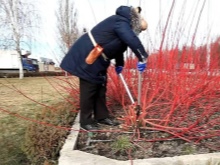
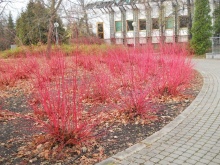
Care
Krasnotal is a picky representative of the plant world. It takes root well, while requiring minimal attention. Of course, the plant needs watering, pruning and fertilization, then it will actively grow and look attractive.
- Light. Red willow grows well in well-lit areas, but then it needs more frequent watering.
- Priming. As mentioned earlier, the bush grows well in loam. At the beginning of spring, it is imperative to loosen and mulch the soil in the near-trunk circle.
- Watering. There is no need to make heavy watering, since the reddish man does not like this. Watering frequency is on average once every 2 weeks. 2-4 buckets are enough for one tree. Watering is desirable in the early morning or after sunset.
- Fertilizers. Red willow prefers organic fertilizers, like other representatives of the willow family. Experts allow to apply complex fertilizers several times a year, but at the end of summer it is imperative to use superphosphate.
- Do not forget about spraying trees. For this, copper oxychloride is used, which protects them from the appearance of brown and gray spots on the leaves of the plant. Such troubles can appear with fairly frequent rains.
- Pruning. This procedure is common since all willow trees need it. Shelyuga tolerates this action perfectly. Pruning allows you to give the willow an attractive appearance, as well as cleanse the tree of rather long and old branches. The plant is cleansed and feels better after this procedure.
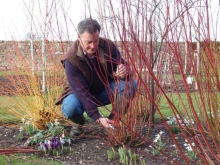
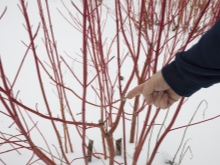
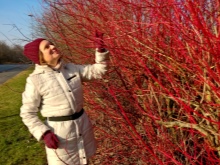
Reproduction methods
Krasnotal can be propagated independently in several ways: vegetative and seed. Let's consider each option in more detail.
- Vegetative. Reproduction takes place using cuttings and layering. The method is quite simple, since the red willow takes root very easily. It is advisable to prepare cuttings in early spring. Their length can be about 30 cm, but the number of buds is up to 7 pieces. You can slice tangentially. Further, the finished cuttings need to be deepened into the soil (must be necessarily wet) by about a third. If it is not possible to immediately plant the holly willow in the ground, then you can put the finished cuttings in the water, while it is important to first make notches at the base. Roots will soon appear in these places.
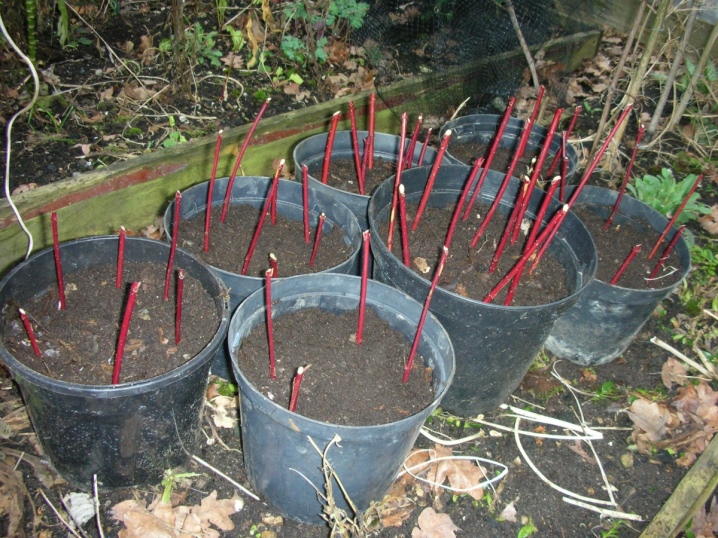
- Seminal. This option is only suitable for professional gardeners. Breeders know the intricacies of seed germination and create new varieties.

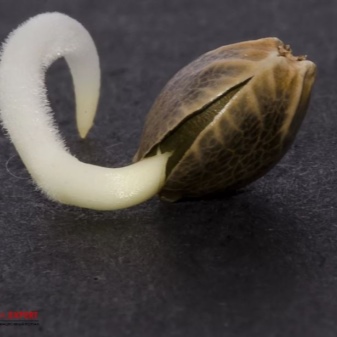
Diseases and pests
Krasnotal takes root well and is unpretentious to care for. It is quite resistant to various diseases. However, it can be infected by fungal bacteria. For example, bark or leaves suffer from white heart rot.
Among the pests are aphids and silkworms.
To combat diseases and pests, special spray solutions should be used. They can be purchased at specialized stores. The affected area must be cleaned, then sprayed with the following solution: 1 liter of water + 40 grams of copper sulfate or a copper-containing preparation.

Application
The red willow is an ornamental tree. Quite often, it is planted to create an attractive hedge in its area. It looks great near water bodies, while it allows you to strengthen the coastline and prevents siltation of the channel, helps to fix the sands.
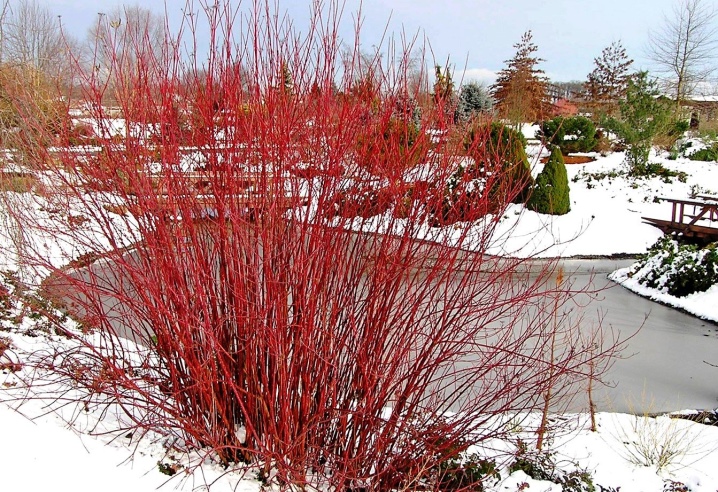
Roots grow up to 15 meters. Due to their flexibility, they are widely used in weaving baskets, various furniture, hoops and original caskets. Red willow twigs are even used for decorative purposes. For example, they make luxurious large earrings with a glossy sheen of a red hue.

Various decoctions and infusions are made from the bark. In folk medicine, it is used to treat fungus, thrombophlebitis, and respiratory diseases. Bark powder is used to stop nosebleeds in children. Regular consumption of infusions can improve appetite, as well as the digestion process. The broth has anti-inflammatory properties. It is often recommended for diarrhea.
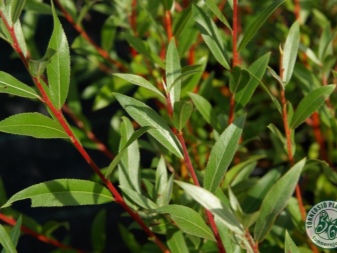
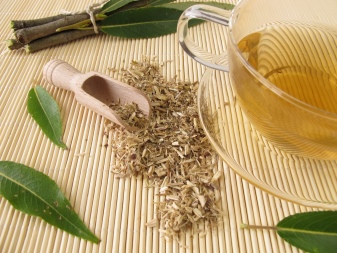
Preparations made on the basis of red willow help relieve joint pain, therefore they are recommended for arthritis, rheumatism and gout. The broth perfectly tones, has a positive effect on low blood pressure. External use allows you to eliminate various kinds of inflammation of the skin, wounds heal much faster.
For more information about krasnotal, see the video.



































































The comment was sent successfully.